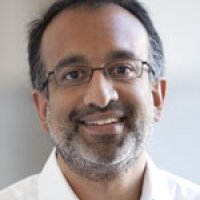Book Launch: Little America--The War Within the War for Afghanistan
After nearly 11 years of war—the longest in U.S. history—the stabilization of Afghanistan remains a major work in progress. U.S.-led coalition forces have succeeded in overthrowing the Taliban-led government and uprooting al-Qaeda from its long-time sanctuary, but violence continues to ravage the nation. The war has killed more than 3,000 NATO troops and more than 11,000 Afghan civilians.
U.S. struggles in Afghanistan constitute the subject of Rajiv Chandrasekaran’s new book, Little America: The War Within the War for Afghanistan. On July 16, the Asia Program, with assistance from International Security Studies and the Middle East Program, hosted a book launch for Little America, which Chandrasekaran wrote while serving as a Wilson Center Public Policy Scholar in 2011.
One of the book’s main focuses is NATO’s counterinsurgency (COIN) effort in Afghanistan. The strategy—influenced by the “clear, hold, build” model employed by U.S. forces in Iraq, and featuring a surge of 100,000 new troops—was controversial well before President Obama decided, in late 2009, to implement it in Afghanistan. Uniformed personnel in the administration were strong supporters, but some key civilians—including Vice President Joe Biden—were wary. Chandrasekaran quoted a memo Biden sent to Obama, in which the vice president expressed skepticism about the U.S. military’s ability to achieve the “build” dimension of COIN. While Obama ultimately sided with his generals, Chandrasekaran argued that if the U.S. government had properly studied the troubled history of earlier American involvement in Afghanistan, “it wouldn’t have barreled forth” with the “large-scale nation building” inherent in the COIN strategy.
This history, he explained, includes Washington’s expensive attempts to modernize southern Afghanistan’s Helmand River Valley from the 1940s to 1970s. After World War II, the nation’s development-minded king, Zahir Shah, hired Morrison Knudsen (MK)—an American firm that had built the Hoover Dam and the San Francisco Bay Bridge—to construct irrigation canals and a large dam on the Helmand River. Shah’s view was that by making use of the Hindu Kush’s ample waters, prosperity would emerge and turn a dry valley into fertile ground.
Unfortunately, problems arose from the start. The region’s soil was not only shallow, but also situated on a thick layer of subsoil that prevented sufficient drainage. When the soil was irrigated, water pooled at the surface and salt accumulated heavily. Yet despite these challenges, the U.S. government was determined to continue this enterprise—particularly when Washington began to fear that if it did not support this project, the Soviets would.
In 1949, the United States provided the first installment of what would amount to more than $80 million over a 15-year period. In the 1960s, the Afghans severed their contract with MK, and began working directly with U.S. government agencies, including the new U.S. Agency for International Development (USAID). However, due in great part to waterlogging and soil salinity, the objective of transforming the region into Afghanistan’s breadbasket was not attained. The grand experiment officially ended in 1978, after a coup staged by Afghanistan’s Communist Party.
COIN, Chandrasekaran stated flatly, has not worked, in part because three key outcomes necessary for its success have not been achieved. First, Afghanistan’s government has not been a “willing partner.” According to Chandrasekaran, President Hamid Karzai simply “doesn’t believe in COIN.” Second, the Pakistani government has not rooted out the Afghan Taliban sanctuaries in its tribal belt, which are used as staging grounds for attacks on Afghanistan and international forces stationed there. Instead, during the height of the U.S. surge, Chandrasekaran alleged, Pakistan’s main spy agency, the ISI, “began to interact directly with the Afghan Taliban.” Finally, the U.S. public has not been patient about the war effort. When Obama announced the troop surge, the war was already in its eighth year, and only a “slim majority” of Americans supported the president’s decision.
Chandrasekaran also identified operational failures within multiple government agencies. He faulted the Pentagon for sending too many troops to the wrong places; the first stages of the surge sent soldiers not to critical regions such as Kandahar—the Taliban’s spiritual homeland—but instead to less populated areas such as Helmand. Meanwhile, USAID’s “civilian surge” brought a rush of development experts to Afghanistan—yet most were sent to Kabul, and forced to stay at their desks and do tasks that could easily have been accomplished back in Washington. Many of these new arrivals were unqualified. USAID also injected too much money into a nation wholly lacking in absorptive capacities. Chandrasekaran likened this “cash surge” to coming across a hot, parched man and, instead of offering him a tall glass of water, soaking him with a fire hose.
What could Washington have done differently in Afghanistan? Chandrasekaran cited approvingly the advice of John Kael Weston, who has served as a U.S. foreign service officer in Afghanistan. Weston argues that instead of executing a surge, the United States should have “gone long” with a small but enduring force. Yet according to Chandrasekaran, implementing such a strategy was unlikely, as it would have required a first-term president with no military experience “to stand up to war-hungry generals.”
Speaker

Senior Correspondent and Associate Editor at The Washington Post
Hosted By

Indo-Pacific Program
The Indo-Pacific Program promotes policy debate and intellectual discussions on US interests in the Asia-Pacific as well as political, economic, security, and social issues relating to the world’s most populous and economically dynamic region. Read more


Middle East Program
The Wilson Center’s Middle East Program serves as a crucial resource for the policymaking community and beyond, providing analyses and research that helps inform US foreign policymaking, stimulates public debate, and expands knowledge about issues in the wider Middle East and North Africa (MENA) region. Read more
